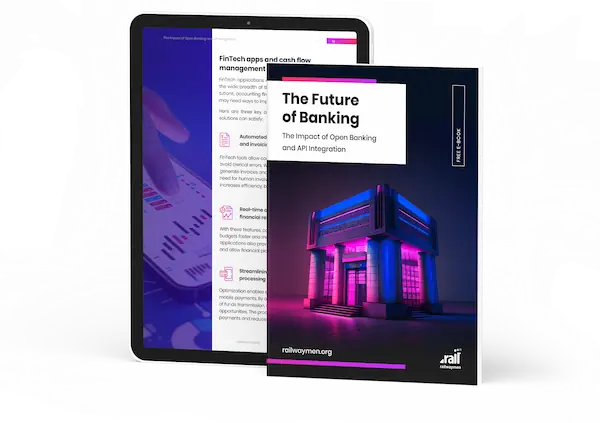Open banking is revolutionizing the payments' industry through the adoption of Variable Recurring Payments (VRPs), offering a range of advantages over traditional methods. VRPs stand to open up enormous opportunities for businesses and consumers, from intelligent savings and overdraft protection, to bill payment efficiencies and enhanced security protocols.
In this article, we will delve into the benefits and innovations of VRP in Open Banking, as well as some of the challenges and adoption barriers that could prevent it from reaching its full potential. We will also discuss how businesses can start using VRP now and consider other alternatives to keep ahead in this ever-evolving world of subscription economies.
Table of Contents:
1. Introduction to Virtual Relationship Payments.
2. What are the Benefits of VRP?
3. How VRP Enhances Subscription Payments.
4. What are the potential commercial use cases for VRP?
5. Explaining Open Banking and its Impact on Payments.
6. The Synergy between VRP and Open Banking.
7. Potential Challenges and Adoption Barriers of VRP in Open Banking.
8. How should Businesses be Approaching VRP now?
9. Alternatives to VRP in the European Union.
10. Anticipated Future Advancements and Continued growth of VRP in the Subscription Economy.
Introduction to Virtual Relationship Payments
Virtual Relationship Payments (VRP) is a secure payment method that enables third-party providers to process recurring payments on behalf of consumers, combining the advantages of direct debit and open banking payments. It enables consumers to securely link a licensed third-party provider to their bank account, allowing the provider to make a series of payments on their behalf.
The process is enhanced with Strong Customer Authentication (SCA). This allows customers to securely make recurring payments using facial recognition or fingerprint scanning. Variable Recurring Payment is a convenient solution for consumers, as it eliminates the need for manual payments and can be used to pay utility bills, online payments, and repeat invoices.
There are two primary types of VRPs:
-
Sweeping VRPs - employed for both overdraft protection and intelligent savings.
-
Non-sweeping VRPs - typically used for commercial purposes.
It is also an alternative to direct debit payments, as it allows for payments of variable amounts and does not require customers to update their payment information if their cards expire.

What are the Benefits of VRP?
VRP offers a range of advantages to both merchants and consumers alike. It provides an expedited experience, settling immediately when used with real-time payment rails, and allows customers to confirm the availability of funds prior to taking a payment, thus reducing the risk of payment failure.
Additionally, sweeping VRPs offer the advantages of providing overdraft protection and intelligent savings. It provides a viable alternative to credit cards and debit payments that satisfy both requirements, which could potentially affect the utilization of credit cards, debit systems, and direct debits, and could lead to reduced costs for merchants.
How VRP Enhances Subscription Payments
#Seamless Customer Experience
VRP streamlines the payment process by eliminating the need for customers to repeatedly provide payment information. This reduces customer effort and improves overall customer satisfaction. Customers can initiate and authorize payments directly from their bank accounts, making the payment experience smooth and hassle-free.
#Increased Flexibility and Personalization
With the ability for providers to offer subscriptions tailored to billing cycles, personalized pricing options and value-added services, customers have the freedom to choose preferences that align with their individual needs.
#Enhanced Security and Fraud Prevention
Integrated with an open banking infrastructure, VRP ensures compliance with regulatory standards and robust data protection measures. Secure communication channels and standard APIs provided by Open Banking help protect sensitive financial data.
#Improved Customer Retention and Loyalty
An easy and intuitive payment process, increased flexibility and increased security contribute to improving customer satisfaction. Satisfied customers are more likely to continue their subscriptions, leading to higher retention rates and greater customer loyalty.
What are the potential commercial use cases for VRP?
Commercial VRPs are a form of variable recurring payment that can be utilized for commercial purposes. This type of payment present a more cost-effective solution than direct debit and card payments, making them an attractive option for businesses and consumers alike. This can open up a wider range of potential use cases for commercial entities.
VRP can be used in a commercial setting for:
-
managing active subscriptions,
-
providing one-click payments to e-commerce platforms,
-
entering the direct debit and card-on-file market.
Businesses can also utilize VRP for recurring billing, such as subscription services, mobile payments, and recurring payments for goods and services.
This provides a more efficient and cost-effective way to manage payments while reducing the risk of fraud.

Explaining Open Banking and its Impact on Payments
Open banking is a concept that promotes the secure sharing of financial data between traditional financial institutions, such as banks, and third-party providers, such as FinTech companies. It is typically facilitated through the use of application programming interfaces (APIs) that enable the exchange of data in a standardized and secure manner.
The introduction of open banking has had a profound impact on the payments landscape. By granting customers greater control over their financial data and fostering competition and innovation, open banking has created opportunities for new payment solutions and improved services. It has paved the way for innovative technologies like VRP to flourish, as it provides the necessary infrastructure for secure data sharing and collaboration between stakeholders.

The Synergy between VRP and Open Banking
Virtual Relationship Payments, and open banking are complementary technologies that synergize to revolutionize subscription payments.
Open banking provides the infrastructure and regulatory framework for secure data sharing, enabling seamless information flow between financial institutions, subscription providers, and customers, when VRP leverages this framework to enhance payment experiences by facilitating direct payments from bank accounts, personalized options, and improved customer satisfaction.
This synergy empowers businesses to offer seamless subscription payments while ensuring high levels of security and compliance.
Potential Challenges and Adoption Barriers of VRP in Open Banking
The adoption of VRPs in Open Banking is facing certain challenges, but the industry should strive to create a more ambitious future that goes beyond these. The introduction of VRP systems is accompanied by a number of potential liabilities and disputes, due to a lack of regulatory clarity.
Additionally, it is yet to be determined how many banks will fully adopt VRPs, the associated costs, and who will bear them, as well as whether banks will be incentivized to improve their authentication processes in order to gain a larger share of the payment market.
VRP technology could revolutionize the payments' industry by introducing open banking technologies as the primary means of online payments. Despite this, the industry should set its sights on a more ambitious future beyond VRPs. Open banking regulations must be understood, followed, and employed in order to ensure a safe and secure environment for payments. Banks must also be willing to invest in the development of VRPs and other open banking technologies in order to create an efficient and cost-effective payment experience.

How should Businesses be Approaching VRP now?
Businesses should invest in VRP now to capitalize on its potential and remain competitive, as regulators are projected to broaden its scope to include more features and versatility. Companies such as NatWest and Tink have already made investments in VRP, enabling them to provide sweeping payments that allow customers to make payments via direct debit, credit card, and other payment methods. This provides companies with the opportunity to build a solid relationship with their customers, as well as the ability to manage their cash flow more efficiently.
VRP can provide businesses with the ability to offer customers more control over their payments, such as the ability to sign up for payment plans, set up automatic payment reminders, as well as receive notifications when payments are due. All of these features can help businesses increase customer loyalty and reduce churn.

Alternatives to VRP in the European Union
SlimPay has developed SlimCollect, an open-banking solution for direct debit payments in the EU, which is designed to provide high conversion and trust similar to VRPs. SlimCollect initiates the first payment via open banking, collecting the consumer's IBAN directly from their bank. Subsequent payments are then processed via SEPA mandate, with direct debits automatically generated.
SEPA direct debit is a reliable payment method that customers trust, and offers customers more control over their finances while providing a cost-effective alternative to VRP payments. It is also regulated by the Competition and Markets Authority, a UK body that oversees competition within the EU. This regulation provides customers with a sense of security and assurance, as it ensures that third-party providers are held to a certain standard when offering services.
Furthermore, the low cost of using SEPA direct debit makes it an attractive option for businesses.

Anticipated Future Advancements and Continued growth of VRP in the Subscription Economy
By utilizing the latest technology, such as Blockchain and Artificial Intelligence, Variable Recurring Payment has the potential to revolutionize the subscription economy. VRP is well-positioned to take advantage of the growth of the subscription economy due to its ability to facilitate secure and efficient recurring payments.
With its ability to streamline the payment process and reduce costs, VRP will be at the forefront of the growth of the subscription economy. As VRP continues to gain traction and evolve, businesses should be prepared to take advantage of the many benefits it has to offer.

Summary
Integrated Virtual Relationship Payments with Open Banking offer the transformational potential of subscription payments. By adopting this technology, businesses can improve the subscription experience, increase customer satisfaction and loyalty, and fuel the growth of the subscription economy. Collaboration and innovation within the payments' ecosystem are essential to realize the full potential of VRP and shape the future of subscription-based business models.
Ready to revolutionize the financial industry with your own FinTech App?
Railwaymen is a great partner for cutting-edge financial technology app development solutions!
Contact our team today to discuss your vision and bring your innovative ideas to life.
Let'create an amazing App together!
Find out what banking will be like in the coming years with our e-book
Want to learn about the latest banking trends and how they impact the industry? Our e-book "The Future of Banking: The Impact of Open Banking and API Integration" is the perfect resource for you. With expert analysis and practical tips, you will be equipped with the knowledge you need to succeed in today's FinTech landscape.
DOWNLOAD NOW






